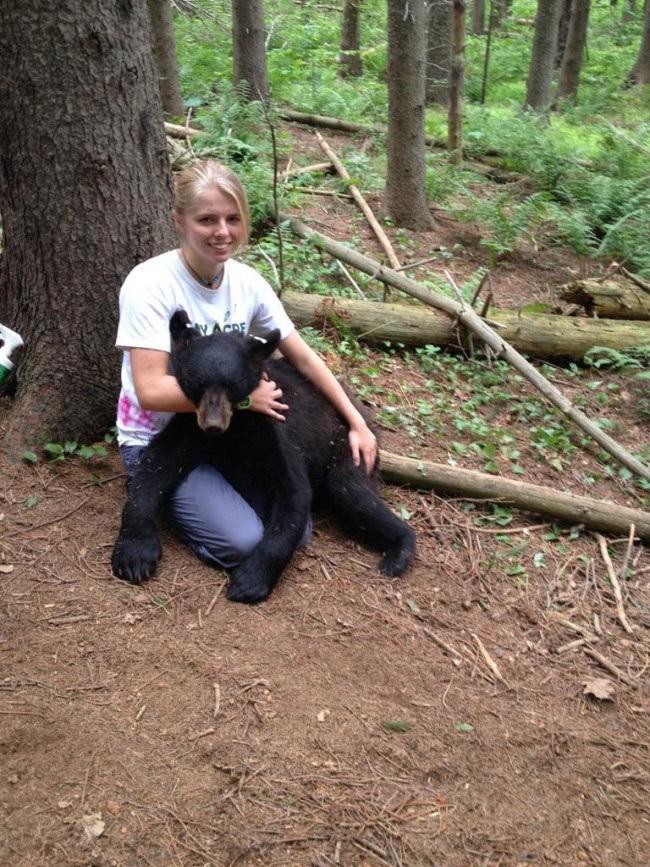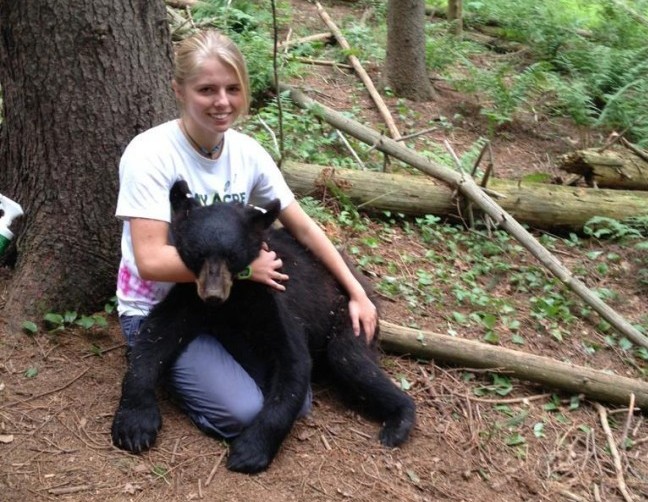

Photo Credit / Morgan Tirone
By Briana Magistro
SC Staff Writer
Last semester students living in the University Ridge Apartments received the shock of a lifetime when they discovered a resident black bear scavenging the dumpsters behind the complex.
This is a common occurrence throughout the Poconos, as well as many other forested areas throughout North America. The American black bear is the most common bear species in the world.
American black bears usually weigh between 100 and 550 pounds, depending on their individual habitat. For example, black bears in California are typically much smaller than those found in the Appalachian Mountains.
This is because different habitats offer diverse types and quantities of vegetation and prey. In the drier air of the West Coast, vegetation becomes scarce and prey is dispersed more widely due to an increase in human population.
Meanwhile, the thick greenery and inaccessible terrain of the Appalachians makes metropolitan development impossible. This allows vegetation and prey to grow freely and permits bears to grow larger.
It is believed that during the Holocene Era, which began about 11,700 years ago, black bears were once as large as or even larger than grizzly bears. The Holocene hosted a global warming event that triggered rapid growth in mammals.
As the black bear’s ancestor grew, its cousins grew as well. Soon enough, the black bear was fighting for food with big grizzlies, saber-toothed cats, and dire wolves.
The black bear evolved as an omnivore, consuming both meat and vegetation. This allowed it to become a smaller animal, since competing with other large creatures was not the sole requirement for finding sustenance.
Today’s black bears consume mostly berries, fruit, flowery vegetation, and fish, although they may also hunt small mammals and insects.
According to park rangers at the Smokey Mountain National Park, some bears have learned to recognize common packaged food, such as candy and chips, and will try to break into your car if you leave your bag of skittles on the front seat.
Human growth around wooded areas has increased the number of bear sightings in recent years. As bears lose more of their natural food, they may seek free meals in local garbage cans.
Although black bears can look scary with their large incisors and claws, they are actually much less aggressive than their grizzly cousins.
According to the Smokey Mountain National Park’s guide to the park, if you encounter a black bear, it is imperative that you do not run or turn your back on a bear, as it may follow you.
Instead, shout loudly and use your clothing and arms to make yourself look as big as possible. This will discourage the bear from approaching you further.
While many may think that “black” bears always have black coats, this is not always the case. Black coats are most common in black bears, especially in the eastern parts of North America. Other colors, like cinnamon, brown, and even blonde have been recorded.
These colors occur as mutations, and without a natural predator, bears with color mutations are able to pass their genes on to future generations, developing a population of color-mutated bears.
American black bears can live for around 18 years in the wild, but can live past 40 years in captivity. This is mostly due to loss of habitat or sickness caused by human waste.
Black bears can produce up to six cubs in one mating season and females may have more than one mate. The mother bear takes care of her cubs alone until they are old enough to feed and fend for themselves.
Mothers are typically extremely protective of their cubs. This protectiveness is one of the highest leading causes of bear attacks, along with hunting in populated areas.
Like a lot of North American mammals, black bears enter a dormant stage in the winter. Hormones and cellular cycles allow the bears to conserve the energy required for survival for the whole season.
Black bears may gain around 10 to 30 percent of their weight prior to hibernation. During milder winters, some bears can awaken temporarily to forage for food.
Next time you are exploring the Delaware Water Gap, or even just having a chat outside of your Ridge apartment, keep a look out for the American black bear.
Email Briana at:
bmagistro@live.esu.edu

